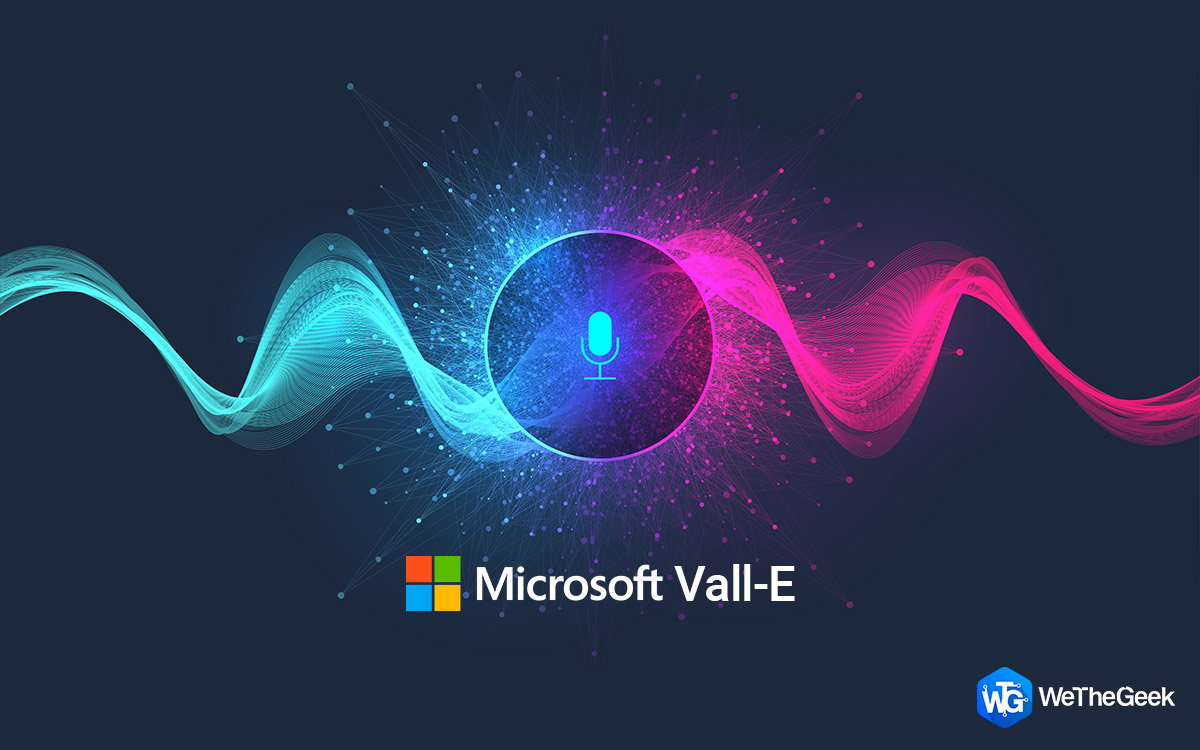Microsoft has developed VALL-E – a text-to-speech AI model that mimics any voice just by listening to an audio sample of 3 seconds.
| Before you read on, I would like to make it clear that VALL-E is different from WALL-E. Although some of us would pronounce both words exactly the same, there is a lot of difference between the two. WALL-E is a Disney-Pixar animation released in 2008, which included a cute and friendly AI robot.
The AI factor is indeed a similarity between VALL-E & WALL-E. |
What Do We Know About VALL-E?

In technical terms, Microsoft calls VALL-E a “Neural Codec Language Model”. In a more simple language, VALL-E is an AI model that can generate audio from text input as well as mimic the voice of any audio sample provided. By hearing a vocal sample as brief as three seconds, it can imitate any voice. VALL-E is not yet generally accessible to the general public. It can not only fit the voice but also the mood and acoustics of the space. There are moral issues with it, despite the fact that it can be applied in many beneficial ways.
Training Models –

Researchers claim to have trained VALL-E on 60,000 hours of English language speakers, as compared to 7,000+ people on Meta’s LibriLight audio library. The voice of the target speaker must closely resemble the training data in order to be mimicked. This way the Al can utilize its ‘training’ to attempt and imitate the targeted speaker’s voice.
Imitate Emotions –

It should be emphasized that the Al model may simulate the acoustics of the room as well as the speaker’s emotional tone in addition to pitch, husk, and texture. Therefore, VALL-E will mimic the target voice as though it has a disturbance if the target voice has one.
As per Microsoft’s research team, “The findings of the experiments demonstrate that VALL-E performs much better in terms of speech naturalness and speaker likeness than the most advanced zero-shot TTS system. Additionally, we discover that VALL-E might maintain the speaker’s emotion and the acoustic context of the acoustic prompt during synthesis “.
Threats –
The Al model can be applied to robotics, media production, and custom text-to-speech applications. However, if used improperly, it could pose a threat. The business warned that the model may be misused to impersonate or spoof voice identification because VALL-E could synthesize speech while maintaining speaker identity.
VALL-E could be used, for instance, to generate spam calls that appear to be legitimate in order to scam people. Politicians or anyone with a respectable social presence are also susceptible to impersonation, as demonstrated by hoaxes. Threats might come to users using applications that need speech commands or voice passwords. Furthermore, voice actors’ jobs can be eliminated by VALL-E.
Ethical Position –

In addition, the business includes a statement on ethics that reads, “The trials in this work were carried out under the assumption that the user of the model is the target speaker and has been accepted by the speaker.” The protocol to ensure that the speaker agrees to execute the alteration and the system to detect the modified speech should be included with voice editing models, it stated, when the model is generalized to all speakers.
How Is VALL-E Different From DALL-E?

DALL-E is an OpenAI-created machine-learning model that generates graphics from text descriptions. Prompts are used to describe these text-to-image descriptions. Just a description of the scene is enough for the algorithm to produce realistic visuals. DALL-E is a neural network technique that builds precise images from user-provided short words. It learns language using textual descriptions and from “learning” data that users and developers have contributed to its datasets.
What Do You Think About VALL-E?
We hope now you know all about VALL-E (text to sound) as compared to DALL-E (text to image). There is no definite date as to when VALL-E would be available to access and put to use by the general public. As far as DALL-E is concerned, it has already been made available to all.
Please let us know in the comments below if you have any questions or recommendations. We would be delighted to provide you with a resolution. We frequently publish advice, tricks, and solutions to common tech-related problems. You can also find us on Facebook, Twitter, YouTube, Instagram, Flipboard, and Pinterest.



 Subscribe Now & Never Miss The Latest Tech Updates!
Subscribe Now & Never Miss The Latest Tech Updates!